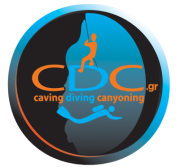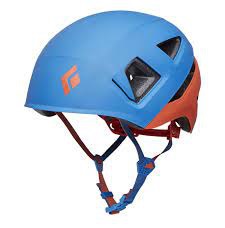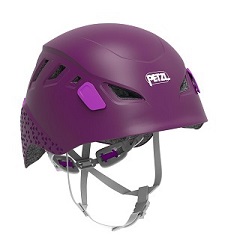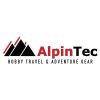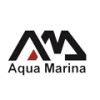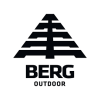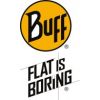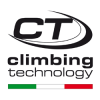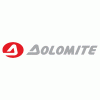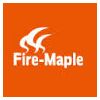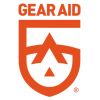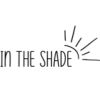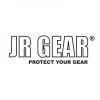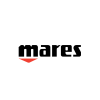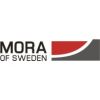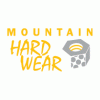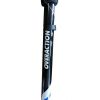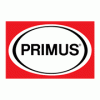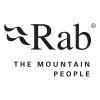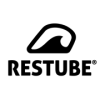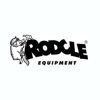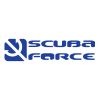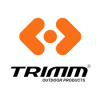Climbing Helmets
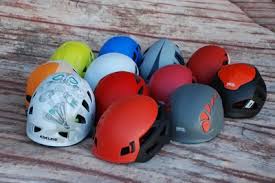
A climber's helmet is one of the essential pieces of equipment they must have, along with a harness, climbing shoes, ropes, etc.
Do I need a climbing helmet?
In short, yes. There is virtually no excuse not to wear a helmet, although many climbers often don't. A fact that often leads to dangerous and even fatal accidents that could otherwise have been avoided. Even during a mountain hike, a slip on the slope can be fatal. Therefore, we must always take into account the dangers lurking on the mountain in order to enjoy our activities with maximum safety.
Climbing helmets are designed to protect you from many possible accident scenarios. for example, when:
• rocks or materials fall on top of you
• you fall and hit your head on the wall
• you hit your head on a ledge
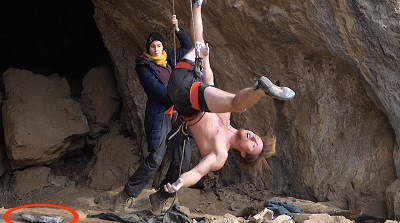
Helmets have traditionally been designed to protect you from things falling from above, and if that's a possibility, then there's no good reason not to wear one. Think alpine climbing, multi-pitch routes, anywhere there is loose rock, when climbing under others, ice climbing, or just hanging out at the base of a cliff.
Recently, however, with the introduction and now widespread use of EPP foam (explained below) in the construction of these helmets, many are also designed to protect your head from side impacts, such as if you hit your head on a rock while falling . This is an added incentive to wear a helmet and is even more powerful with the addition of MIPS anti-concussion technology (explained below).
Getting the right helmet involves three key factors:
1. The type of helmet
2. The type of climbing you do
3. The correct application
1. TYPE OF HELMET
There are many options when it comes to climbing helmets and with new foam technologies, combined with technologies perfected in bike or ski helmets also making their way into climbing-specific models, this is one of the types of climbing equipment that is changing and are evolving rapidly.
While mountaineering helmets used to be a rather simple affair, made of a heavy, hard plastic shell and a fairly elaborate inner frame, these helmets look antiquated by today's standards. Now there are ultralight EPP, EPS, and the still classic ABS-style hard shell helmets, which have also gotten lighter and more comfortable over time.
Climbing helmets come in two basic types. Helmet manufacturers use different terms for each type of helmet, so focus instead on indicative construction details such as shell hardness, foam thickness, and number of vents.
Hardshell (ABS)
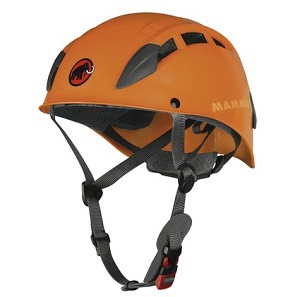
Photo: Mammut Skywalker 2
This type of durable, traditional helmet features an extremely hard outer shell, usually ABS plastic, which is combined with a suspension system with internal straps and a thin foam padding. Other terms for these helmets are suspension helmets and hybrid helmets. This type of helmet offers two main advantages:
• Low price
• Long life span
|
ADVANTAGES |
DISADVANTAGES |
|
More durable than lightweight foam helmets |
Heavier than light foam |
|
Less expensive |
It is usually designed primarily for top impacts, with less emphasis on side impacts from a fall
|
|
|
It's generally not that well ventilated |
Today there are the classic ABS helmets but also more sophisticated ones combined with light foam inside.
Some examples:
Foam shell helmets: EPS vs. EPP
This lightweight style features a thick shock-absorbing layer of polystyrene (EPP) or polypropylene foam (EPS) protected by a thin polycarbonate shell. Impact forces are dissipated through deformation. This type of helmet offers two main advantages:
• Minimum weight
• Excellent ventilation
EPS — Expanded polystyrene
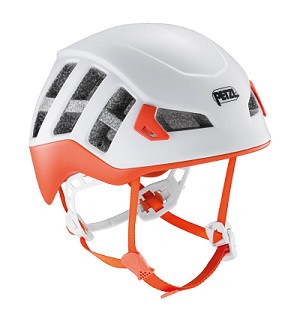
Photo: Petzl Meteor
EPS is the most common type of foam found in helmets specifically for climbing. EPS is the same material that packing "peanuts" and styrofoam are made from, although the materials in your helmet are of a much higher quality. EPS density is "tuned" to absorb harder or softer impacts. EPS can only absorb one hard hit before it needs to retire.
While it may recover slightly in shape over time, the energy transfer properties of the foam cease during an impact event. More often than not, it will crack and break on a direct hit, so there will be no debate in your mind as to whether the helmet is still usable or not.
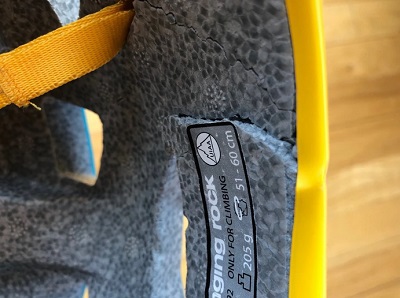
Photo: Cracks on the foam due to impact
In these helmets, the EPS is usually covered with some form of plastic shell to protect it from "softer" impacts, which can destroy its ability to absorb the significant "hard" impact it would otherwise protect against.
Advantages and disadvantages of EPS foam
|
ADVANTAGES |
DISADVANTAGES |
|
It can be adjusted to absorb hard impacts such as falling rocks or ice
|
It can only absorb one hard hit before it crushes or cracks and becomes useless
|
|
Cheaper to produce than EPP, leading to less expensive helmets
|
Non-recyclable
|
|
Light weight
|
The production process is not environmentally friendly
|
|
Can be combined with other material such as polycarbonate (shell) or Kevlar (inner) to add structure and strength |
|
Examples of helmets with EPS foam or ABS +EPS hybrids:
EPP — Expanded Polypropylene
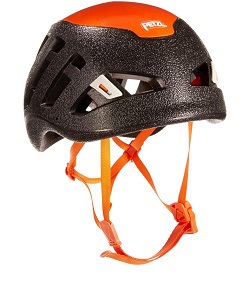
Photo: Petzl Sirocco
Expanded Polypropylene (EPP) is a very similar material to EPS, except that unlike EPS, it is softer and more elastic and does not shatter immediately, meaning it can absorb more gentle impacts without having to recoil. It's worth mentioning that a very hard impact is likely to damage it permanently, so you'll need to retire an EPP helmet after a hard hit. EPP is most often used on the sides of a helmet to provide more protection from your head hitting the wall when you fall, and is less commonly used on the top of the head to absorb impacts from rocks.
Advantages and disadvantages of EPP foam
|
ADVANTAGES |
DISADVANTAGES |
|
It can withstand multiple soft hits without becoming useless |
More expensive to produce than EPS |
|
Less likely to crack |
Less dense than EPS foam, so it generally can't withstand an extremely hard hit |
|
It does not need to be protected by plastic shells for soft impacts |
|
|
It can be recycled |
|
|
Extremely light weight |
|
Examples of helmets with EPP and helmets with EPP+EPS or ABS+EPP+EPS:
CERTIFICATION EN 12492
(source: https://help.sweetprotection.com/hc/en-us/articles/360017100000-EN-12492-Mountaineering-Helmets )
As we have seen today, there are many hybrid helmets with many combinations of materials, so it is good to do a proper study before buying your helmet. Regardless of your choice, all helmets must meet the CE EN 12492 industry standard for impact protection.
There are five major requirements a mountaineering helmet need to surpass to be certified:
1. Field of vision
Making sure the helmet design does not interfere with the user’s field of vision
2. Extent of coverage
Making sure the helmet covers all necessary parts of the head
3. Shock absorbing capacity
Helmets are subjected to an impact from a falling mass onto a fixed headform. However, to reflect the nature of the use, additional impacts are required at the front, side and rear of the helmet. These impacts are carried out by tilting the headform on the rigid base at an angle of 60° (so that impacts are carried out at 30° from the horizontal plane of the headform).
Impacts are carried out using two strikers, one flat and one hemispherical, each weighing 5kg. Helmets are impacted using the hemispherical striker dropped from a height of 2 meters, and at the front, rear and sides using the flat striker dropped from a height of 500mm. In all cases, the transmitted force through the headform cannot exceed 10kN..
4. Resistance to penetration
This is where the mountaineering certification differs the most from the EN1077 certification for ski and snowsports. These helmets are intended to provide protection against sharp / pointed objects from above, and so are tested for penetration by sharp objects. The test in EN 12492 is a 3kg conical striker dropped onto the helmet from a height of 1 meters. The point of the metal punch must not reach the head inside the helmet
5. Retention system performance
This test covers the strength of the retention system (webbing), as well as its effectiveness, i.e. the webbings ability to keep the helmet securely positioned on the head.
MIPS (Multi-directional Impact Protection System)

Scientists Hans von Holst and Peter Halldin from Sweden discovered that by placing two low-friction layers inside a helmet, they could create relative motion between the helmet and the head that could reduce rotational damage to the brain.
MIPS is made up of a thin layer of material incorporated into the inside of a helmet, commonly referred to as a slip plane, or a slip liner. It is independent of the helmet shell, but it is anchored at a few key points. Its design allows it to move independently of the helmet in all directions (hence multi-directional), and this in turn allows the helmet to rotate independently from the head. The result is an absorption of energy when crashing, which reduces rotational motion of the head itself, and thus the brain.
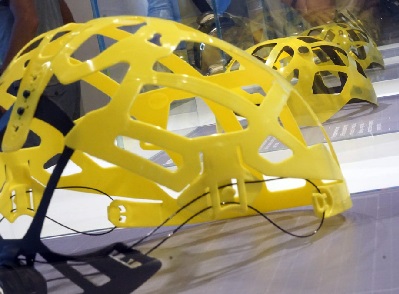
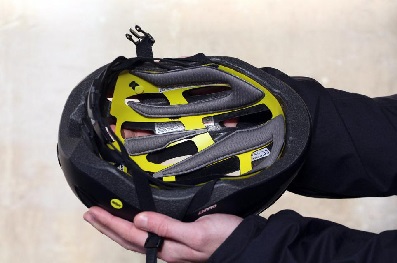
In more basic terms, MIPS technology allows the helmet to move around your head during a crash, meaning less force is transferred to the brain within
2. TYPE OF CLIMBING
Now that we've seen the different types of helmets, let's look at the type of climbing you do and how that will affect your choice. Regardless of the type of helmet you choose, all helmets provide special clips around the perimeter for attaching a headlamp.
Mountaineering and multi-pitch climbing: When carrying a lot of gear and wearing a helmet for long periods of time, low weight and plenty of ventilation are important factors. So consider a lightweight shell foam helmet.
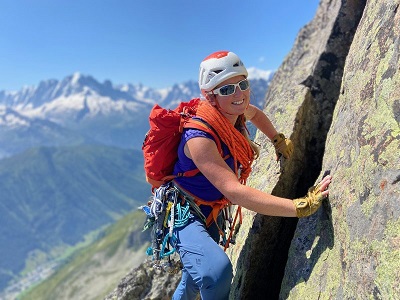
Also, choose a bold color helmet for mountaineering. Whiteout conditions on the winter mountain are always a possibility, and you want your team members to be able to spot you.

Ice climbing: Since you'll be vulnerable to a lot of falling debris, look for a foam-shelled model with minimal ventilation openings..
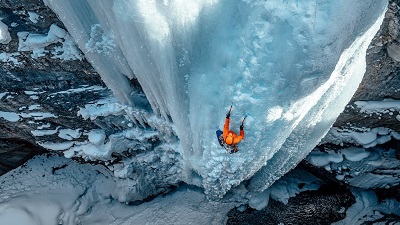
Sport climbing in warm weather: Prefer EPP or EPS foam models with the largest number of vents.
.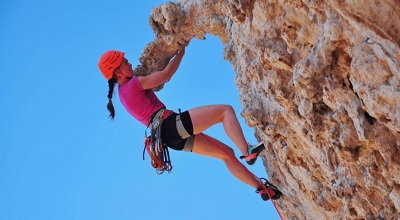
Sport climbing in cool weather: Because you can take the helmet off while waiting your turn to climb (unless belaying), you can choose to trade the comfort of a foam shell model for the durability and affordability of an ABS hard shell.
Belay: Protection from falling rock or equipment is a concern when belaying someone, so it is important to wear a helmet when belaying. Remember: When you protect yourself properly when belaying, you also protect your rope partner! In this case no special helmet is required: Just wear the helmet you brought for climbing.
Indoor climbing: Gym rules will dictate if a helmet is required. But since falling rock isn't a concern, a cool, lightweight foam shell helmet is the sensible choice if you must wear one.
3. FIT
Even when friends or reviewers suggest a helmet is the best, it won't be right for you if it doesn't fit properly. If you cannot get a good fit with the helmet you have chosen, you should try another model. The best way to evaluate fit is to try on different helmets at a specialist climbing shop.

Check for a secure fit: Start by placing the helmet flat on your head, with the front lip straight across your forehead. After you adjust the fit, but before you buckle the chinstrap, shake your head from side to side and tilt your head back slightly. The helmet must remain firmly on your head.
Check and adjust the chinstraps: After you buckle the chinstrap, the straps should not be loose, and should form a "Y" around each of your ears.
Check out the ease of customization: Play around with the customization system to see how easy it is to perfect the fit. Ease of fit is an important factor especially in cold conditions because you have to readjust the fit to wear a scarf or cap under the helmet.
Women’s helmet
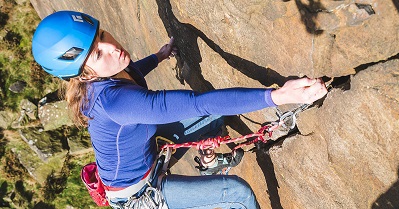
Unlike the shape of a woman's hips or body in general, when it comes to the difference between men's and women's skulls, the only general difference is that women tend to have a smaller circumference. There is technically no need for a female model other than two things: hair and color. Therefore, many manufacturers make a "women's" version of some of their helmets, but it is exactly the same as the men's in some nicer colors. E.g. Half Dome and Vector from Black Diamond.
While not all women have long hair and ponytails, those who do (and men too!) know that it can be difficult to wear with a helmet. Petzl makes a women's version of Boreo called Borea, which is the same except for a cutout notch in the rear where a ponytail can fit conveniently.
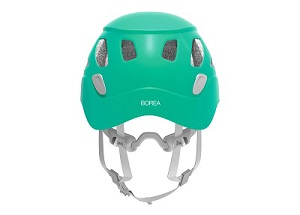
Kid’s helmet
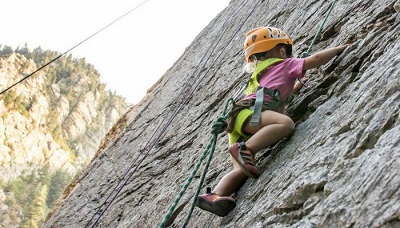
Climbing is a wonderful sport suitable even for children as long as all safety rules are followed. Many parents introduce their children to climbing from an early age as most children seem to have an innate tendency to climb (be it trees or rock!). For this reason, some companies manufacture special helmets for children as well.
Even if our children have come for company and do not climb, since they are in an outdoor climbing area it is advisable to wear a helmet to protect themselves from stones or materials that may fall.
One more reason to wear a helmet ourselves is the fact that whether we like it or not, our every action is an example for our children to follow. Let's make sure we set the best example for our children, both for our own protection and for theirs in the future!
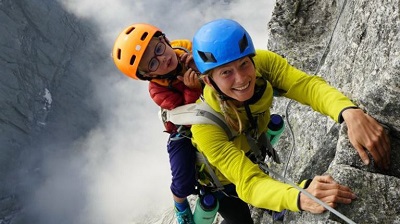
Lifespan of a helmet
Retire any helmet with dents, cracks or damage including the straps. Even if there is no visible damage, retire your helmet after any incident that makes you think, "I'd be in serious trouble without my helmet."
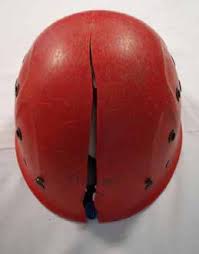
Do these checks before every climb:
• Is the outer shell free of any noticeable damage? Small dents are ok. Big dents are not.
• Is the buckle in good condition?
• Are the straps in good condition and free of tears?
• Is the foam liner secure inside the helmet shell?
If the answer to any of these questions is no, then get a new helmet. Additionally, you should place your helmet inside a climbing bag to protect it from hitting hard surfaces, which makes it vulnerable to breaks and cracks.
Even if it has never been hit, retire the helmet within 10 years. The sun's UV rays slowly degrade the materials, so if you climb often, it's a good idea to cut this lifespan in half.
CONCLUSIONS
The helmet is probably the most important piece of our equipment, as even if we are not climbing but in a climbing field we must wear a helmet to be safe. That is, going to the mountain, before we even put on our harness, we will put on our helmet!
In summary we see that there is a wide variety of mountaineering/climbing helmets, suitable to meet our every need. Therefore, in order to make the right purchase, we must do an in-depth study of the materials and understand what each helmet can offer us, depending on the type of activity we do. The next step is to try different helmets to choose the one with the best fit on our head. Certainly our choice will also depend on our financial ability, nevertheless it is worth investing in a proper helmet, suitable to protect us when needed. And be sure that sooner or later the time will come when it will be needed!
SOURCES:
https://mountainequipment.com/blogs/buyers-guides/rock-climbing-helmet-buyers-guide
https://www.rei.com/learn/expert-advice/climbing-helmet.html
https://www.outdoorgearlab.com/topics/climbing/best-climbing-helmet/buying-advice
https://climbtheearth.com/how-to-choose-a-rock-climbing-helmet/
https://help.sweetprotection.com/hc/en-us/articles/360017100000-EN-12492-Mountaineering-Helmets
Recent posts
-
24/05/2024Backpack Guide Part Α’ 10 – 30 L
-
20/03/2024Guide for crampons
-
19/02/2024Hangboarding for beginners
-
06/02/2024Rock Climbing in Occupational Therapy
-
23/11/2023Climbing Grades
-
22/11/2023Climbing in psychotherapy
-
16/11/2023What is Bouldering
-
15/11/2023Trad VS Sport Climbing
-
15/11/2023Winter Tents
-
07/11/20233 Season Tents
-
03/11/2023Summer Tents
-
02/11/2023Lifespan Of Your Climbing Gear – Part B Metal Components
-
02/11/2023Lifespan Of Your Climbing Gear – Part A (Harness, Rope, Slings and Webbing)
-
30/10/2023Nail Vernis Aquaglutene - Vade Retro
-
30/10/2023THE LOG BOOK
-
30/10/2023Mountain cookware
-
30/10/2023Our Blog
-
30/10/2023Climbing Shoes - Quick Buying Guide
-
30/10/2023Washing and maintenance of the sleeping bag
-
30/10/2023Superlight Tents
-
30/10/2023ΙNFORMATION FOR CRAMPONS
-
30/10/2023Ice axe
-
30/10/2023INFLATABLE MATTRESS SLEEP
-
30/10/2023Nikwax secrets of waterproofing
-
30/10/2023What Is “Softshell”?
-
30/10/2023Slacklining, ένας εναλλακτικός τρόπος γυμναστικής.
-
30/10/2023Mountaineering - Hiking Boots
-
30/10/2023Waterproof Membranes
-
30/10/2023Sleeping Bags
-
30/10/2023Sleeping Mats
-
30/10/2023Base Layers
-
30/10/2023Climbing Helmets
